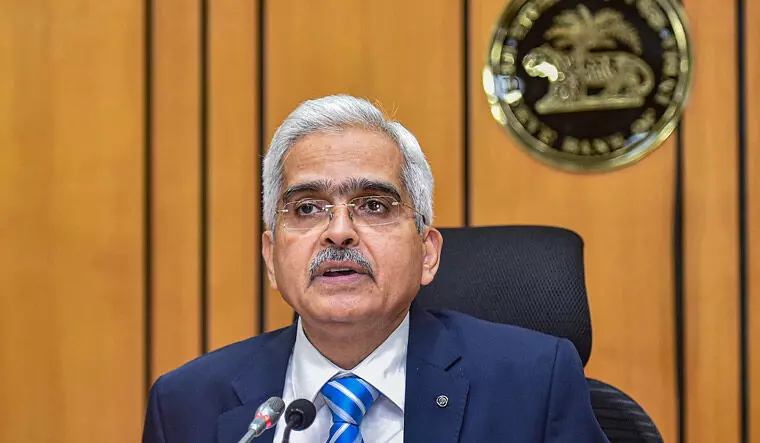Cautious and calibrated

The Monetary Policy Committee (MPC) of the Reserve Bank of India (RBI) has unanimously kept the repurchase rate (repo rate) unchanged at 6.5 per cent for the third consecutive term — exhibiting its unwavering focus on containing inflation. The MPC made a slight upward revision in the inflation forecast for FY2024 from 5.1 per cent to 5.4 per cent. Interestingly, while the inflation forecast for Q2 has been sharply raised from 5.2 per cent to 6.2 per cent, and that for Q3 has been raised from 5.4 per cent to 5.7 per cent, the estimate for Q4 has been kept unchanged at 5.2 per cent. Amid volatile internal and external conditions, the central bank’s steadfast commitment towards anchoring inflation is reassuring. RBI governor Shaktikanta Das asserted that "bringing headline inflation within the acceptable range is insufficient; our focus must remain unwavering on aligning inflation with the 4.0 per cent target." Towards achieving this aim, apart from keeping key policy rates unchanged, the MPC sustained its withdrawal of accommodation stance while also supporting growth. The decision on the retention of monetary policy stance, however, was arrived at through a 5:1 vote, rather than unanimously. In its bid to anchor inflation, the MPC also announced the imposition of an incremental cash reserve ratio (CRR) of 10 per cent for the net demand and time liabilities (NDTL). The Cash Reserve Ratio (CRR) is a monetary policy tool used by central banks to control the amount of money that banks are required to hold in the form of reserves with the central bank. It is expressed as a percentage of the total deposits that a bank holds. The primary purpose of the CRR is to ensure the stability of the financial system, manage liquidity, and influence inflation and economic growth. In the present case, the incremental CRR is aimed at absorbing excess liquidity spurred by withdrawal of Rs 2,000-rupee banknotes and healthy capital flows. The central bank’s wise reassurance of reassessing this move on or before September 8 also wards off the apprehension that increased tax outflows could lead to liquidity crunch amid a festive season. The RBI’s cautious and calibrated approach appears prudent in the wake of a series of internal and external shocks that loom large on the horizon. While the vegetable price shocks may be transient in nature, the uptick in crude oil prices and aberrant precipitation patterns may malign the outlook to a greater depth. Amid potential turbulence, resilience of the economy, reflected through disciplined inflation, becomes a prerequisite for long-term growth prospects. On the growth front, however, MPC’s projections appear incomprehensible. Despite highlighting potential risks arising from subdued global demand, instability in global financial markets, geopolitical conflicts, and other challenges in the global economic landscape, the MPC upheld its forecast for real GDP growth in FY2024 at 6.5 per cent. Moreover, the quarterly predictions have also been retained at 8 per cent for Q1, 6.5 per cent for Q2, 6 per cent for Q3, and 5.7 per cent for Q4. It appears that the retention of growth projections has been made considering the improved demand scenario. Still, it could have been more realistic. Going forward, the chances of a rate cut appear elusive in the near future. At the same time, despite certain short- and mid-range risks, the possibilities of rate hikes are also less likely. For the coming months, prolongation of rate hike pause appears to be a viable proposition. However, nothing can be said with certainty amid what could safely be called an uncertain scenario. One has to keenly look for the monetary policy stance the MPC adopts in its upcoming meetings. Meanwhile, the government should endeavour to enhance supply-side attributes, which could aid the RBI in containing inflation while also maintaining a healthy headroom.



